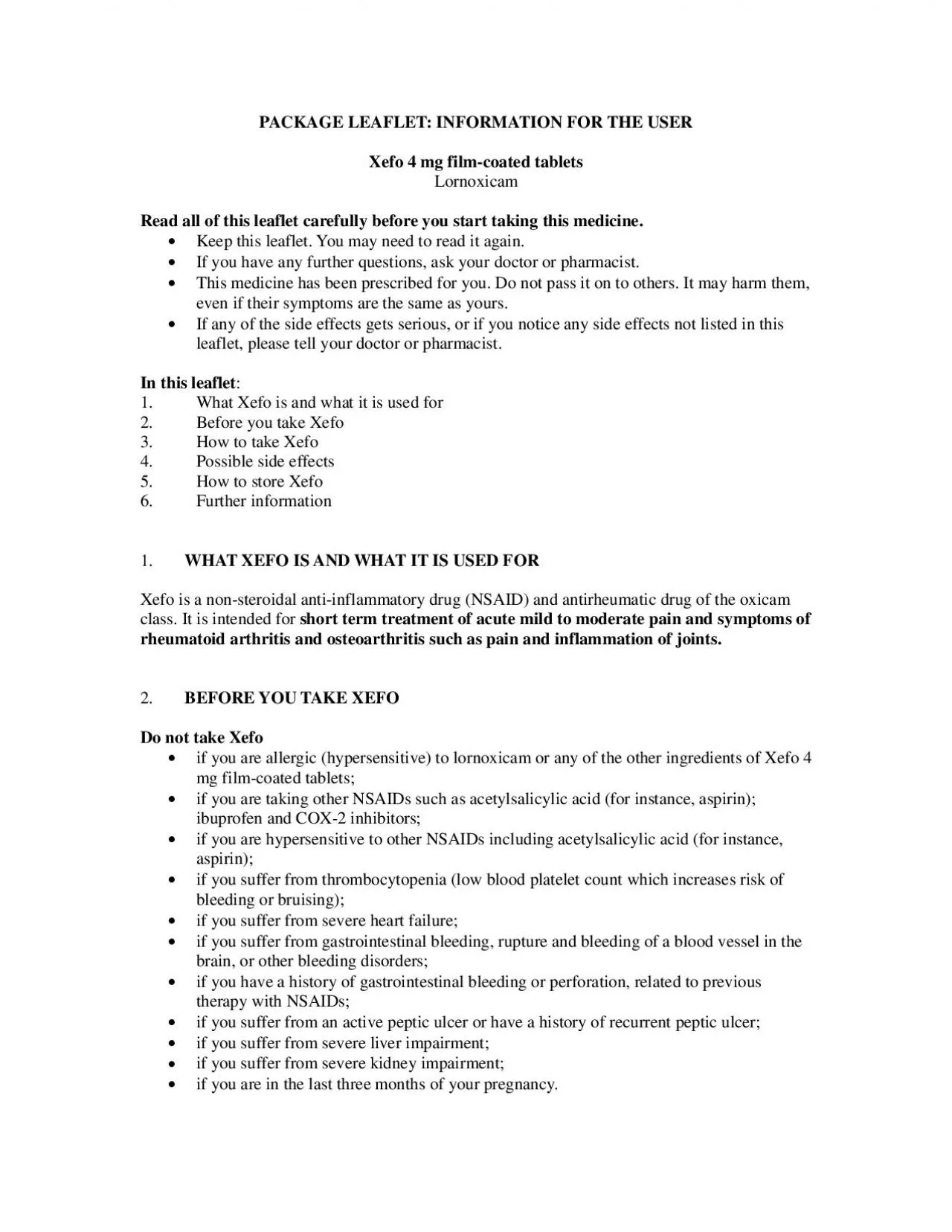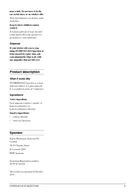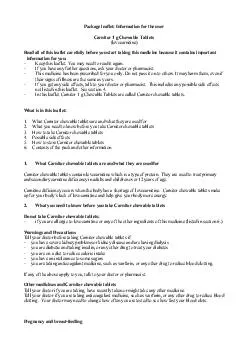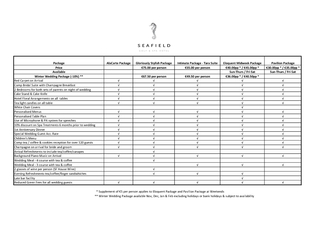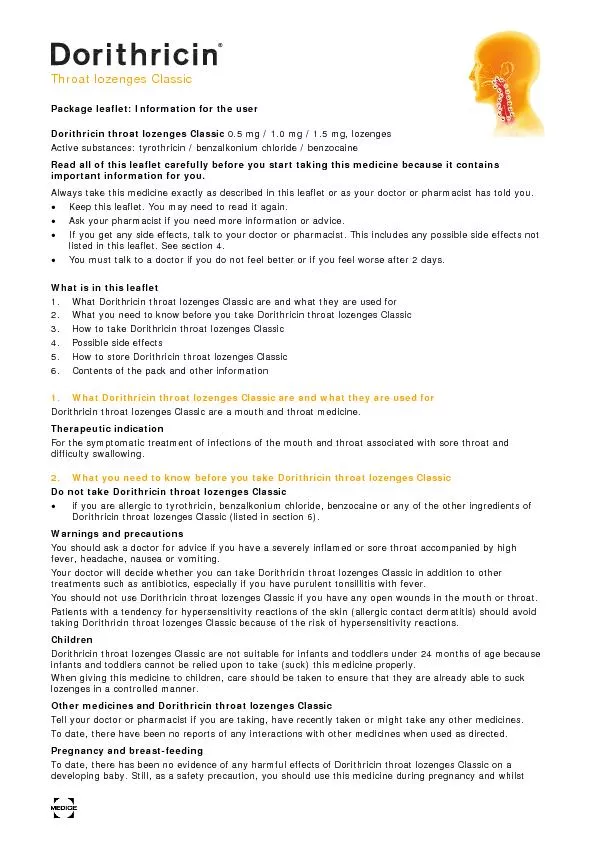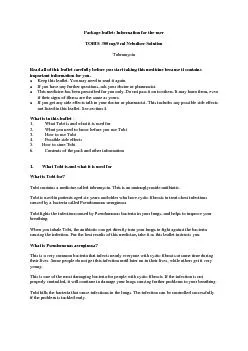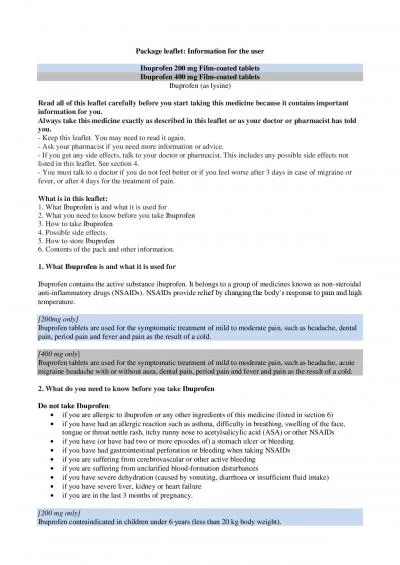PDF-PACKAGE LEAFLET INFORMATION FOR THE USER
Author : hadly | Published Date : 2021-07-07
Xefo 4 mg film coated tablets Lornoxicam Read all of this leaflet carefully before you start taking this medicine Keep this leaflet You may need to read it again If
Presentation Embed Code
Download Presentation
Download Presentation The PPT/PDF document "PACKAGE LEAFLET INFORMATION FOR THE USER" is the property of its rightful owner. Permission is granted to download and print the materials on this website for personal, non-commercial use only, and to display it on your personal computer provided you do not modify the materials and that you retain all copyright notices contained in the materials. By downloading content from our website, you accept the terms of this agreement.
PACKAGE LEAFLET INFORMATION FOR THE USER: Transcript
Download Rules Of Document
"PACKAGE LEAFLET INFORMATION FOR THE USER"The content belongs to its owner. You may download and print it for personal use, without modification, and keep all copyright notices. By downloading, you agree to these terms.
Related Documents

